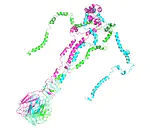Save the bees - Beeosensor and iGEM
 Beeosensor Logo, designed by Nikola Vinko
Beeosensor Logo, designed by Nikola Vinko
The American Foulbrood (AFB) is the second-most dangerous bee disease after the Varroa mite. The AFB-bacteria Paenibacillus larvae turn the bee larvae into infectious brown slime that can wipe out a whole colony. When the beekeeper notices the danger it is often already too late to treat the disease successfully and the hive is usually burned to avoid spreading. This can be avoided if the bacteria are detected early enough when their concentration in the colony is still very low.
For the international student competition iGEM 2019 our team proved that the spores of the bacterium can be detected by using a biosensor covered with P. larvae bacteriophages. To make the sensor a viable tool requires tuning the sensor to reliably detect very low concentrations. A business model for the sensor could be to give the sensor away for free and charge for the electrodes necessary for each measurement.
Project. The full documentation of the project is available in the wiki-system of iGEM.
Thesis. Linked to the iGEM-project is my Bachelor thesis about the receptor binding protein of the bacteriophage that we used for our biosensor.
Blog. Wanna know how it is to participate in a student research competition of the caliber of iGEM? Red my post about the experience and what I learned as team leader of a research project.

